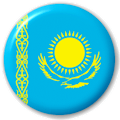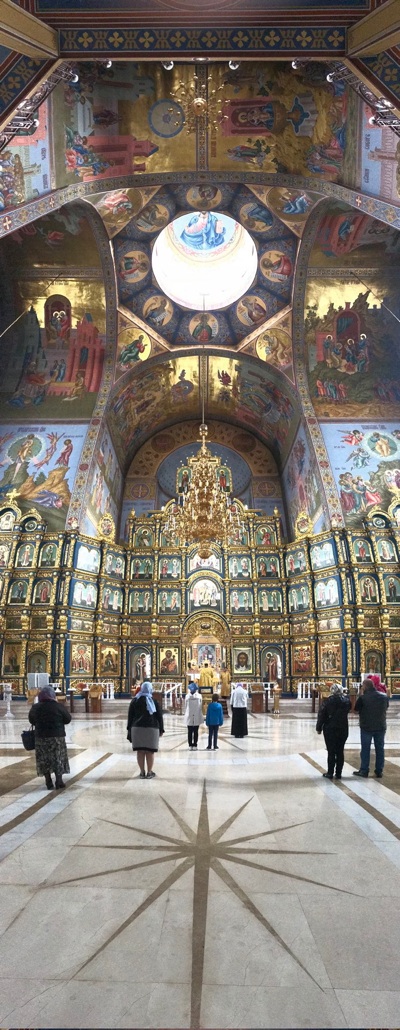Kyrgyzstan and Tajikistan 2018
Kyrgyzstan and Tajikistan 2018

Kazakhstan 2018
Today has been a very worthwhile day for exploring Astana, an example of a city that has been planned specifically to take on the role of a national capital. I was told today that despite considerable political opposition and shortage of finance, Kazakhstan’s President in the 1990s pressed ahead with his desire to transfer the functions of the capital city from Almaty to Astana for three main reasons: (a) unlike Almaty, which lies in an active earthquake zone, Astana is geologically stable, (b) Unlike Almaty, which is close to the country’s borders with China and Kyrgyzstan, Astana is close to the geographical centre of Kazakhstan, and (c) unlike Almaty, which is limited in area by the Tian Shan mountains south of the city, Astana is on a flat plain with unlimited space for future growth. Apparently, ‘quality of life’ wasn’t a factor, given Astana’s harsh climate, and I thought it was telling that every country which has diplomatic relations with Kazakhstan has chosen not to relocate its embassy from Almaty to Astana.
The day began with an emphasis on Kazakhstan’s tolerance for different religions and the manner in which Astana’s diverse religious communities live together in harmony. This involved two visits, first to the city’s large Russian Orthodox Cathedral, and then a visit to the city’s grand mosque.
The name of the Russian Orthodox church was the Uspensky Assumption Cathedral, and to say its interior was elaborate would be a major understatement. Russian Orthodox churches are typically decorated with a plethora of icons and images, but I can’t recall ever seeing one with as many icons as this one, nor one which showed them as clearly with bright lighting. Throughout our visit, a service was underway, and although the attendance numbers were small (being a Thursday morning), the singing was beautiful within the wonderful acoustics of the high domed ceiling, and a video of an excerpt from the service can be seen HERE.
Our visit to the Orthodox Cathedral was followed immediately by a visit to the Grand Mosque, or to give it its full name, the Hazrat Sultan Mosque. This elaborate building was a gift to Astana from the Saudi Arabian Government, and it is huge – depending upon the claim you read, it is either the largest mosque in Central Asia or second only to the massive Gypjak Mosque in Turkmenistan. It can accommodate 5,000 worshippers, and on special holidays, up to 10,000 people. It was pleasing that this mosque welcomed non-Muslims, although the women I was travelling with did have to put on turquoise hooded gowns that were supplied for the purpose, and they were not permitted to enter the main area of the ground floor that is reserved for men.
A short drive brought us to Independence Square, a large open area on Tauelsizdik Avenue that (unsurprisingly) has a tall monument to Kazakhstan’s independence from the USSR, and includes one of Astana’s buildings by the famous architect, Norman Foster. The Palace of Peace and Reconciliation is a glass pyramid that was built with the vague but highly noble aim of reconciling the world’s faiths and ideologies and bringing an end to violence in the world. The structure of the glass building is made from steel, but given Astana’s extreme climate, the beams that make up the building expand by as much as 6 centimetres with the changes in temperature. Consequently, to enable the building to tolerate these fluctuations, the entire structure rests on rails that enable the size of the pyramid to expand and contract. Unfortunately, the building is currently closed for renovations so we weren’t able to see inside.
Another short drive brought us to the huge, blue-domed Presidential Palace and its associated nearby government buildings, one each for the two houses of parliament, the 1.1 kilometre long House of Ministries, the anonymously named “Government House”, and in the not-too-distant vicinity, the very modern turquoise-walled Kazakhstan Central Concert Hall, designed by an Italian architect to resemble the petals of a flower but referred to by locals as ‘the cabbage’.
We could walk right up to the gates of the Presidential Palace, but touching the large iron gates brought instant multiple whistle-blowing from the guard on duty, whose relief for the boredom of standing there seemed to come wholly and solely from … blowing his whistle.
Rather than take yet another short bus ride to the nearby Bayterek Tower, now the icon of Astana, we chose to walk. This was the one place I visited today that I had also visited while in Astana a few weeks ago. The windows are still dirty and overly tinted with yellow reflective film as they were a few weeks ago, but the skies were less overcast today, making the photos from the top a little better than last time although still highly challenging. This visit also brought a more detailed account of the symbolism of the tower’s design, which is supposed to represent a poplar tree (as poplar trees were traditionally thought hold up the sky) and how every year a bird lays a golden egg in its branches, but it is eaten by a dragon, so next year the bird lays another egg, which is eaten by the dragon, and so on and so forth for eternity. Apparently all this represents the need for continual renewal.
After the Bayterek Tower, we drove through several parts of Astana, giving me a chance to observe the emerging urban morphology of the city, and then stopped for a while beside the River Ishim to take in the views of new urban development along the banks. More driving past the city’s Jewish synagogue brought us to a small Georgian-style restaurant where we had lunch.
Following lunch, the afternoon (or what was left of it after we finished lunch just before 3:00pm) was spent at the site of Astana’s Expo 2017. Astana’s Expo took place from 10th June to 10th September 2017 on the theme of “Future Energy”. It aimed to generate a global debate between countries, NGOs, companies and the general public on the crucial question “How do we ensure safe and sustainable access to energy for all while reducing CO2 emissions?”.
A specially built complex of futuristic buildings was constructed in the south of Astana to house the Expo, and these buildings are now being converted into a range of post-expo uses including commercial space for corporations, startups, education and research entities, conference facilities and hotels. Kazakhstan’s pavilion, a glass globe with eight stories (but really 18 stories in height) is still in use to house its brilliant display on “Future Energy”, and this is where we spent the afternoon.
Each floor in the glass dome has a breathtakingly professional display on the expo theme: Astana Smart City (8th floor), Space Energy and Space Exploration (7th floor), Solar Energy (6th floor), Wind Energy (5th floor), Biomass Energy (4th floor), Kinetic Energy (3rd floor), Water Energy (2nd floor), with the introduction to Kazakhstan’s national display on the 1st (i.e. ground) floor.
I would have liked to have spent longer there as our visit was unfortunately marred by an emergency evacuation due to a malfunctioning fire alarm. Nonetheless, I had time to explore the 5th to 8th floors (and of course the ground floor), as well as get some nice elevated photos of Astana’s new areas of urban expansion through the building’s clean, only-lightly-tinted windows.
I was happy that my day in Astana repeated almost nothing that I saw on my previous visit to the city a few weeks ago, and that I now have a more complete picture of this city’s character and its quite bizarre process of forced urban development.

Day 9
Astana
Thursday
20 September 2018

































